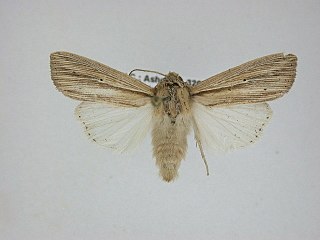
Elattoneura is a genus of damselflies in the family Platycnemididae.

Schwantesia is a genus of plant in the family Aizoaceae. It is named in honor of the German botanist and archaeologist Gustav Schwantes.
Lapidaria is an extinct genus of trilobites. It lived during the Arenig stage of the Ordovician Period, approximately 478 to 471 million years ago.
Bdellodes is a genus of mites, including the species Bdellodes lapidaria.

Asaphidae is a family of asaphid trilobites. Although the first genera originate in Upper Cambrian marine strata, the family becomes the most widely distributed and most species-rich trilobite family during the Ordovician. 754 species assigned to 146 genera are included in Asaphidae.

Tebenna is a genus of moths in the family Choreutidae.
Pomatiopsis is a genus of amphibious snails with gills and an operculum, aquatic freshwater gastropod mollusks in the family Pomatiopsidae.
Pomatiopsis lapidaria is an amphibious species of snail with gills and an operculum, a gastropod mollusk in the family Pomatiopsidae.
Karataunia is an extinct genus of butterfly from the Upper Jurassic of Karatau, Kazakhstan. It contains only one species, Karataunia lapidaria. Its family and superfamily placement is uncertain.
Cyclostoma is an obsolete genus name of operculate snails with circular aperture.

Lapidaria is a monotypic genus of dwarf succulent plants in the family Aizoaceae. The only species it contains is Lapidaria margaretae, also known as the Karoo rose.
Mulona lapidaria is a moth of the subfamily Arctiinae. It was described by Francis Walker in 1866. It is found on Haiti.
Maddenia is an extinct genus of astrapothere, meridiungulate herbivore mammals characterised by its large tusks and the development of proboscis, endemic of South America. This genus was discovered in an outcrop near to the Lake Colhué Huapi in the place La Cantera, in the Chubut Province, in Argentina, in sediments corresponding to the Sarmiento Formation, that dates of the Late Oligocene.
The Capitoline Base or Vicomagistri Base is a marble statue base dedicated to Hadrian in 136 by the 'vicomagistri' or masters of the shrines and temples of Rome. It is vital in reconstructing the topography of ancient Rome, since it lists the vicomagistri shrine by shrine. It was found on the Capitoline Hill in the 15th century and is now held in the Capitoline Museums.
Harpactirella is a genus of African tarantulas that was first described by William Frederick Purcell in 1902. Originally placed with the brushed trapdoor spiders, it was transferred to the tarantulas in 1985.

Alejandro Eduardo Goic Jerez is a Chilean actor. He appeared in more than fifty films since 1988.
Oplonaeschna is a genus of riffle darners in the dragonfly family Aeshnidae. There are about five described species in Oplonaeschna.

Leucania lapidaria is a species of cutworm or dart moth in the family Noctuidae. It is found in North America.

Terebella is a genus of polychaetes belonging to the family Terebellidae.







